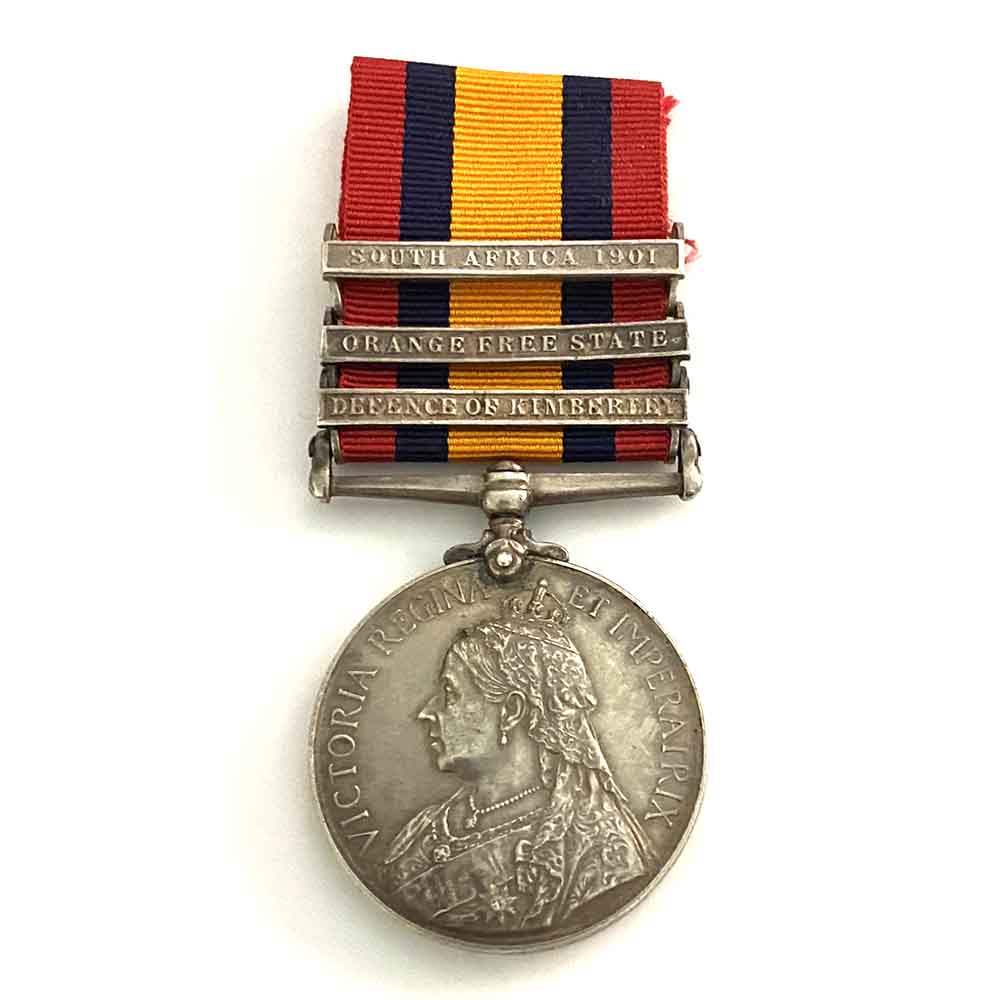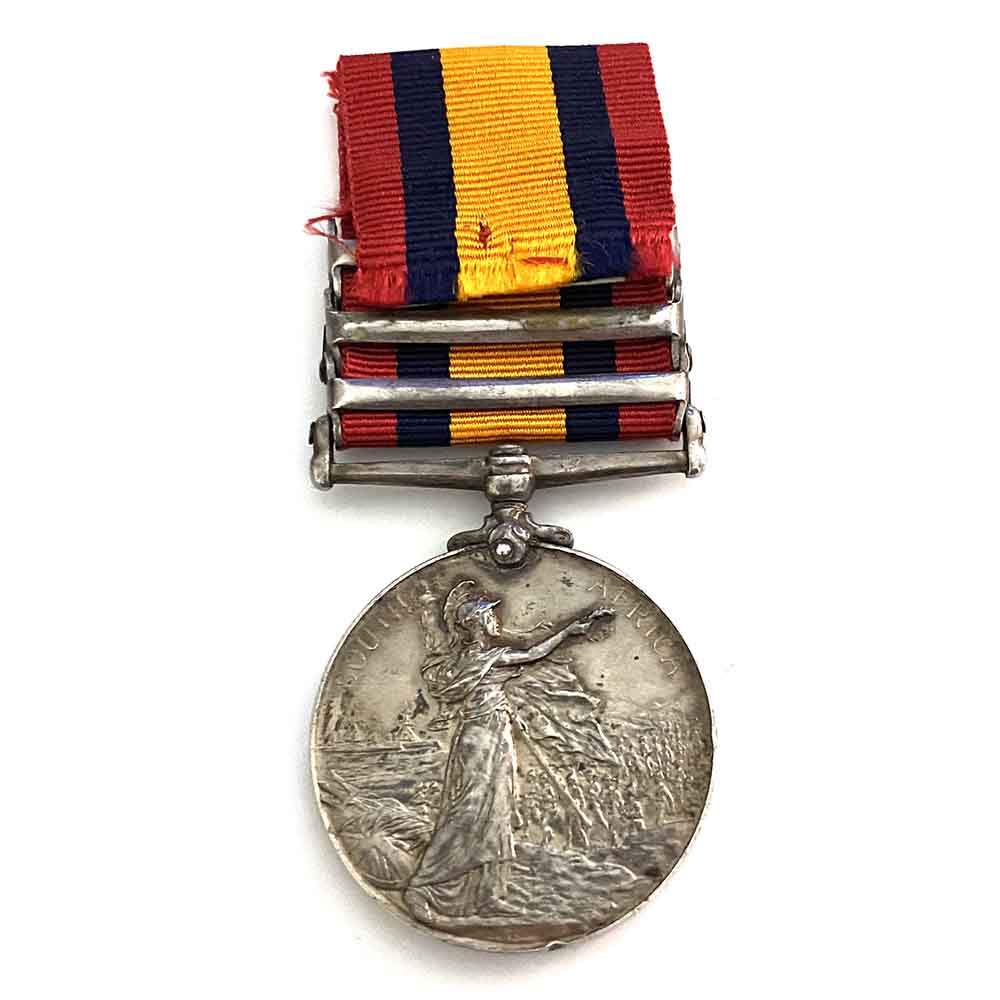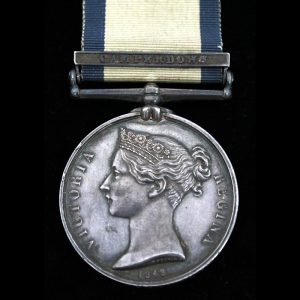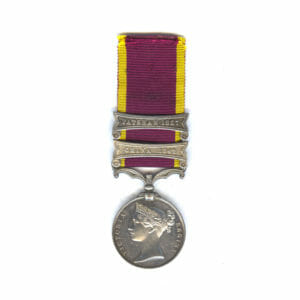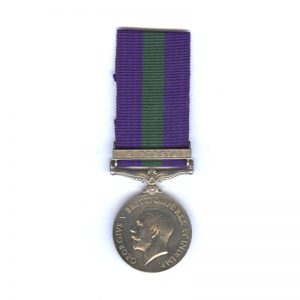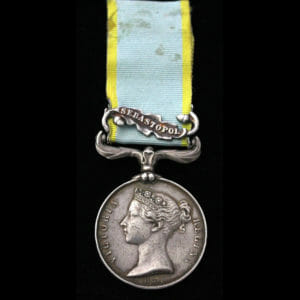Description
Queen’s South Africa Medal, 3 bars, Defence of Kimberley, Orange Free State, South Africa 1901, Transport Officer Captain Simon Peter Waldek, Kimberley Volunteer Regiment and Diamond’s Field Horse, wounded in action at Carter’s Ridge 28 Nov 1899 during Siege.
SA 1901 bar loose on ribbon as issued later, naming officially engraved: “Tran Offr Capt S P Waldek Kim. Vol. Rgt.”
Simon Peter Waldek was born on 30th October 1841 in Swellendam, South Africa being a “Dutch” colonial whose family came from Germany.
His father was Simon Petrus Waldek, born during 1810 in Cape Town, whose father Johannes Frederick Waldeck, born during 1764 in Immenhausen, Kassel, Hesse, Germany had ventured over to South Africa.
He died at the age of 75 at 54, 2nd Avenue, Kenilworth, Kimberley on 3rd February 1917.
He is shown as a Quartermaster, Honorary Captain as of 1st June 1892 in the Argus South African Gazette circa 1896.
The monthly Army List circa 1902 lists him as Transport officer, Waldek, Capt S.P., Specially employed, De Beers Cattle Guard.
There were two battle fought at Carter’s Ridge, over 3 days, both led by Lieut Colonel Henry Scott Turner, having been wounded in the first we still returned to fight in the second only to be killed in action, a good summary of the battle is from the book, Letters from Kimberly: Eyewitness Accounts from the Boer War, by Edwards Spiers:
“ “More problematic was the second assault on 28 November, only three days after the Boers had reoccupied the position. On this occasion Kekewich sought to relieve pressure on Methuen’s relief column by drawing off and holding as many Boers as possible in the vicinity of Kimberley.
He was willing to commit 1,800 men, more than a third of his entire garrison, in three columns: Scott-Turner with 633 mounted men on the right, Chamier with the bulk of the Artillery, Maxims, 5 Companies of infantry and a detachments of sappers (960 men) in the centre, and a left hand column under Major J.R. Fraser (Loyal North Lancs) with detachments of the Kimberley and Beaconsfield Town Guard (300 Officers and men).
Much smaller detachments occupied Otto’s Kopje and a forward position on the Kimberley-Barkly West road.
With the armoured train, steaming first north and then south, to draw off the enemy’s fire, the columns advanced at about 3.30. p.m. while the centre column engaged in a long range artillery and rifle duel at 2,000 yards without casualties.
Scott-Turner led the assault on Carter’s Rdge. Advancing in rushes of 50 yards under the cover of Maxim fire, and later artillery fire from the Diamonds Fields contingent, they seized three redoubts before facing a 4th, ‘practically a stone fortress, with loopholes and splendid head cover’, that commanded the other 3. Only safe lying down, Scott Turner still hoped to seize the gun but when he raised his head, he was shot dead instantly. At nightfall the remnant of the force on Carter’s Ridge returned to Kimberley. When they were allowed to collect the dead on the following day, the losses amounted to 22 dead and 28 wounded.
Neath Man’s Experience and Kimberley, Western Mail, 29 May 1900:
‘Of the 2 sorties, Leon Adlam, a town guardsman, described the one in which Major Scott Turner was killed… as the most important. We were away on the left preventing the Boers form attacking his flank. It was a well conceived attack, and the Boers must have lost heavily.’
The book also adds the account of Albert Clucas, K.L.H., Experiences of Kimberley Siege, Isle of Man Weekly Times, 31st March 1900:
“How Scott Turner and his brave men charged the fort, but were met with a perfect hail of bullets. At about 20 or 30 of our men went down. The rest had to lie flat on the ground, while bullets rained down on them. It was just then that Scott Turner was shot. He put out his had on the pint of a rifle, and in a second it was shot through. He tried again, and the bullets flew through it. He then popped up his head to try and see what was going on when he was shot right through the head, and another young officer near him just missed being killed, a bullet shaving out a groove right along the top of his head. Our men then crawled back and came in to camp.” “
An account of the aftermath from the private diary of Elizabeth Atkinson
“November 30th, 1899
The last day in November and still no Relief Column; though they answered our signalling last night again and are expected to be quite near to Kimberley any hour. But what a lot has happened since last Tuesday morning when I wrote the above!
22 men have been shot down, and are now sleeping their last sleep. The Second Commanding Officer in Kimberley lies with them, being shot through the head with an explosive bullet, as were several others. And nearly thirty men are lying wounded in the hospital as the result of the engagement on Tuesday. It seemed ‘such a pity; that they went out at all.
They captured three redoubts, but the last, heavily manned and a stronghold of the Boers, offered a determined resistance and we (as usual) were short of men and bayonets; the use of the latter being the best means of repulsing the Boer, who is a splendid shot, especially when behind fortifications, or rocks or brick. Our Lieutenant-Colonel Scott Turner was almost the first shot dead on the spot, which fact was enough to dishearten the men, who had been fighting since half past two in the glare and heat of the sun
